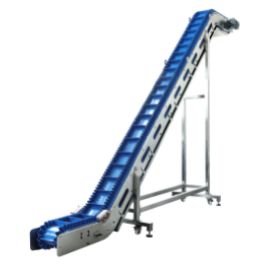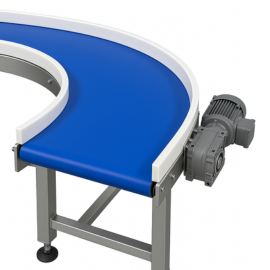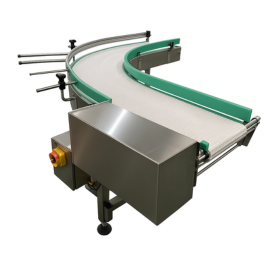
Sensor de célula de carga: guia completo sobre princípio de funcionamento, precisão, calibração e aplicações
Células de carga são componentes essenciais dos sistemas de pesagem modernos, amplamente utilizados em embalagens, automação industrial, logística e aplicações médicas. Estes células de carga do sensor de pesagem transformar força física em sinais elétricos precisos, garantindo precisão, confiabilidade e eficiência em todos os setores.
Este artigo fornece uma visão geral abrangente de células de carga, cobrindo suas princípio de funcionamento, parâmetros da folha de dados, métodos de calibração, diretrizes de instalação e principais aplicações. Se você está pesquisando precisão da célula de carga, comparando preços de células de carga, ou estudando o diagrama de célula de carga, este guia tem tudo o que você precisa.
O que é um sensor de célula de carga?
UM sensor de célula de carga é um transdutor que converte a força ou o peso aplicado em uma saída elétrica. É o elemento central em:
- Máquinas de embalagem de alimentos
- Balanças de varejo e sistemas POS
- Equipamentos de triagem logística
- Dispositivos médicos e laboratoriais
- Sistemas de pesagem de funil e silo
Ao combinar design compacto, construção robusta, e alta precisão, células de carga são o padrão ouro em tecnologia de pesagem.

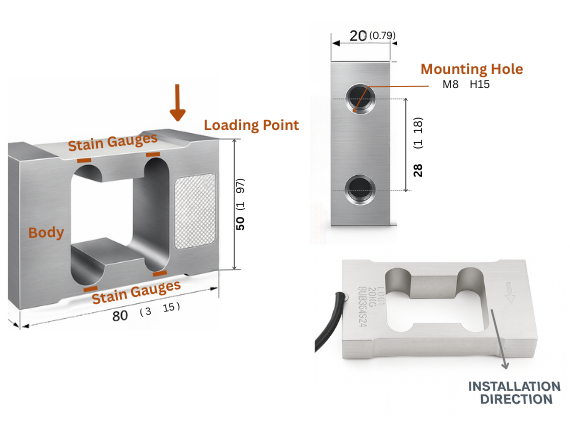
Como funciona uma célula de carga? – Princípio de funcionamento da célula de carga
O princípio de funcionamento da célula de carga é baseado no método do extensômetro:
-
Elemento elástico (corpo de mola): Deforma-se ligeiramente sob carga.
-
Medidores de tensão: Resistores ligados que alteram a resistência com a deformação.
-
Circuito da ponte de Wheatstone: Converte mudanças de resistência em sinais de tensão.
-
Sinal de saída: Proporcional ao peso aplicado (em mV/V).
Este mecanismo simples, mas preciso, permite que as células de carga forneçam medições precisas e repetíveis em diferentes setores.
Explicação da precisão da célula de carga
Precisão da célula de carga é determinado por vários fatores:
- Não linearidade – desvio de uma resposta em linha reta.
- Histerese – diferença nas leituras ao carregar e descarregar.
- Repetibilidade – capacidade de reproduzir resultados de forma consistente.
- Rastejar – desvio nas leituras sob carga constante ao longo do tempo.
- Efeito da temperatura – precisão em temperaturas flutuantes.
Sensores de alta classe, como C3, C4 e C5 são ideais para pesagem farmacêutica, de processamento de alimentos e de laboratório de precisão, enquanto classes mais baixas podem ser suficientes para uso industrial geral.
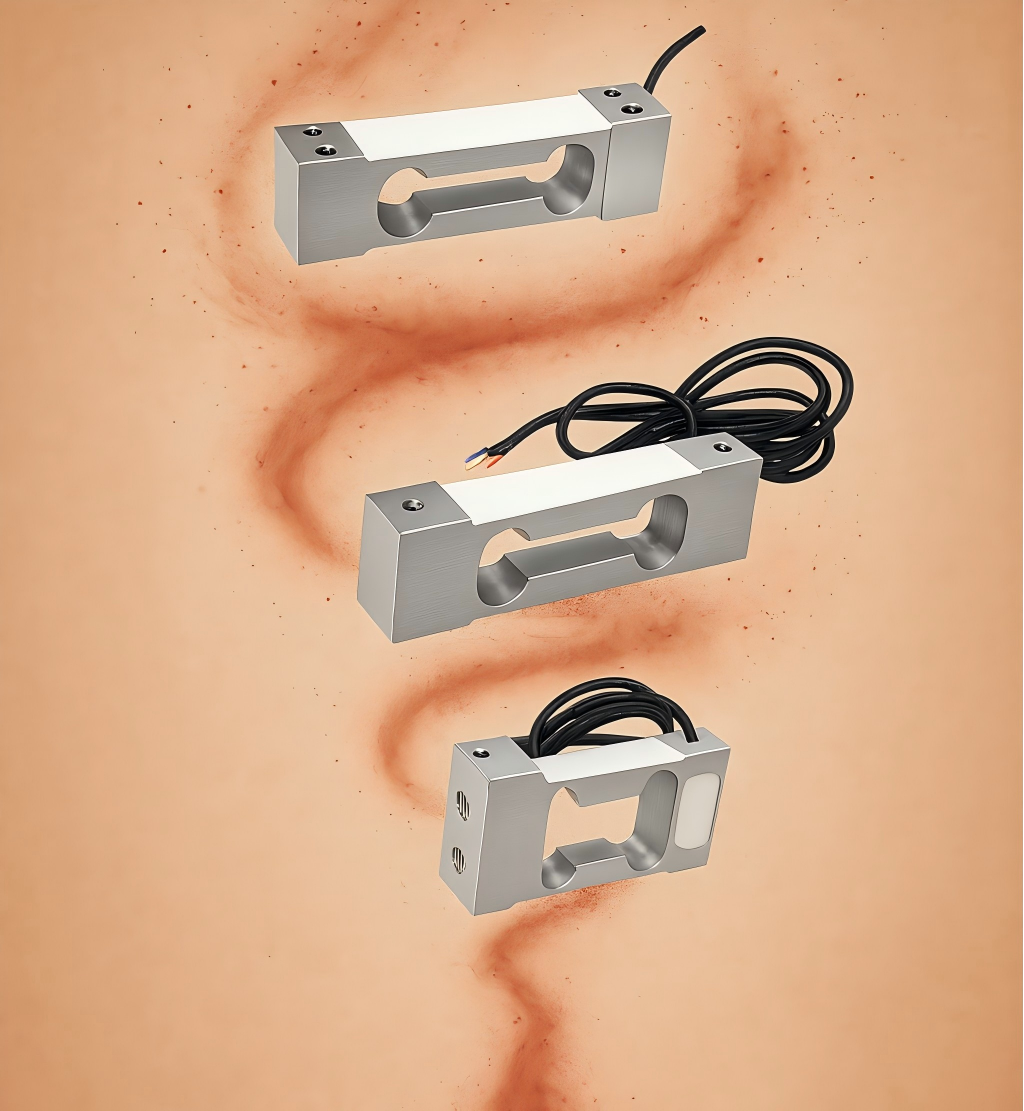
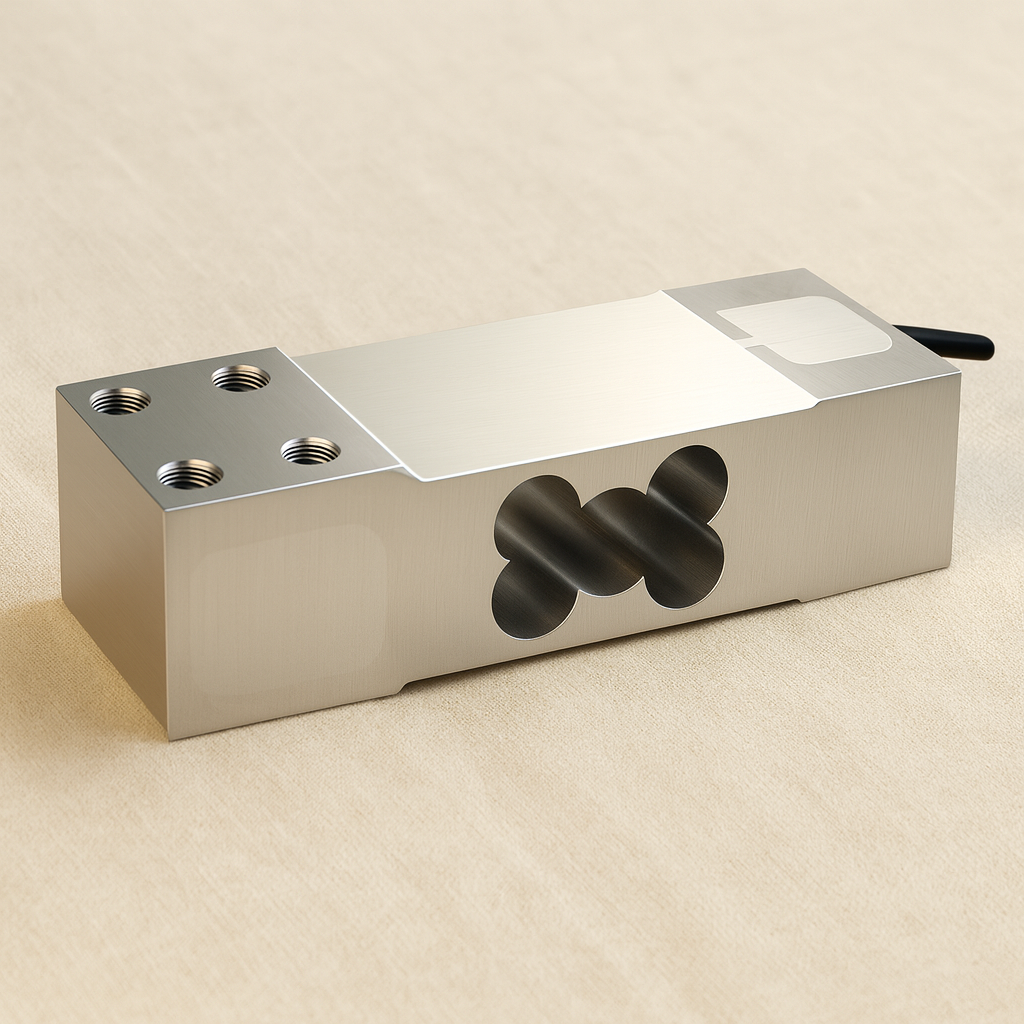
Principais características das células de carga
-
Alta precisão e repetibilidade (Classes C2–C5, em conformidade com a OIML)
-
Design durável com construção em aço inoxidável ou alumínio
-
Proteção ambiental com vedação IP65, IP67 e IP68
-
Ampla faixa de capacidade (gramas a várias toneladas)
-
Compensação de temperatura para desempenho estável em ambientes extremos
-
Baixa suscetibilidade à interferência graças aos cabos de sinal blindados
-
Integração flexível para vários sistemas de pesagem
Ficha de dados da célula de carga – Especificações principais
Um típico folha de dados da célula de carga inclui:
| Parâmetro | Alcance típico |
|---|---|
| Sensibilidade de saída | 1,0 – 3,0 mV/V |
| Classe de precisão | C2, C3, C4, C5 |
| Erro combinado | ≤ ±0,03% FS |
| Creep (30 min) | ≤ ±0,02% FS |
| Efeito da temperatura na sensibilidade | ≤ ±0,002% FS/10°C |
| Impedância de entrada | 350–450 Ω |
| Impedância de saída | 350–400 Ω |
| Excitação recomendada | 5–15 VCC |
| Excitação máxima | 18 VCC |
| Temperatura de operação | -30°C ~ +70°C |
| Proteção contra sobrecarga | 120–300% FS |
| Classificação de proteção | IP65 / IP67 / IP68 |
O estudo desses parâmetros garante que você selecione o célula de carga certa para sua aplicação.
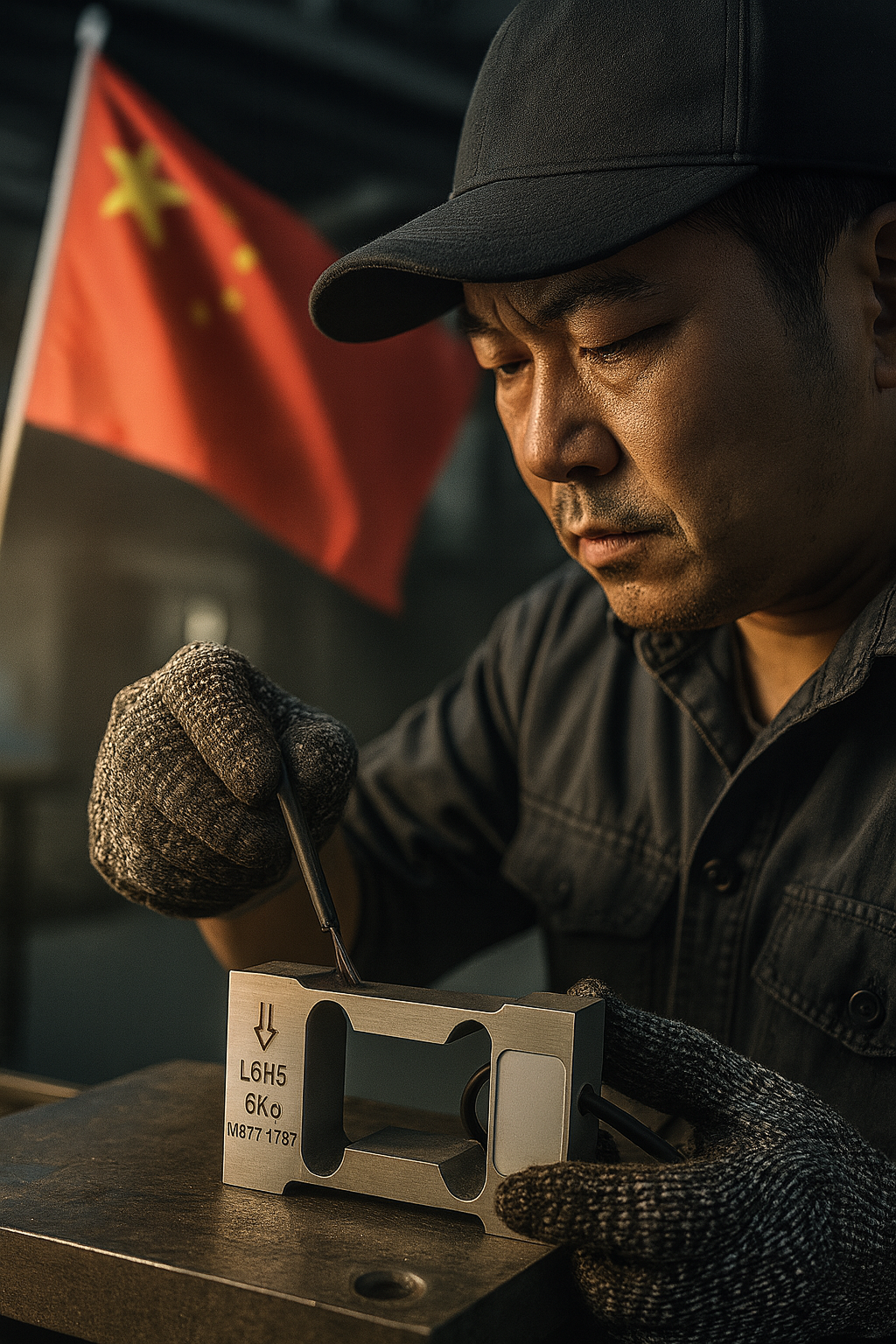
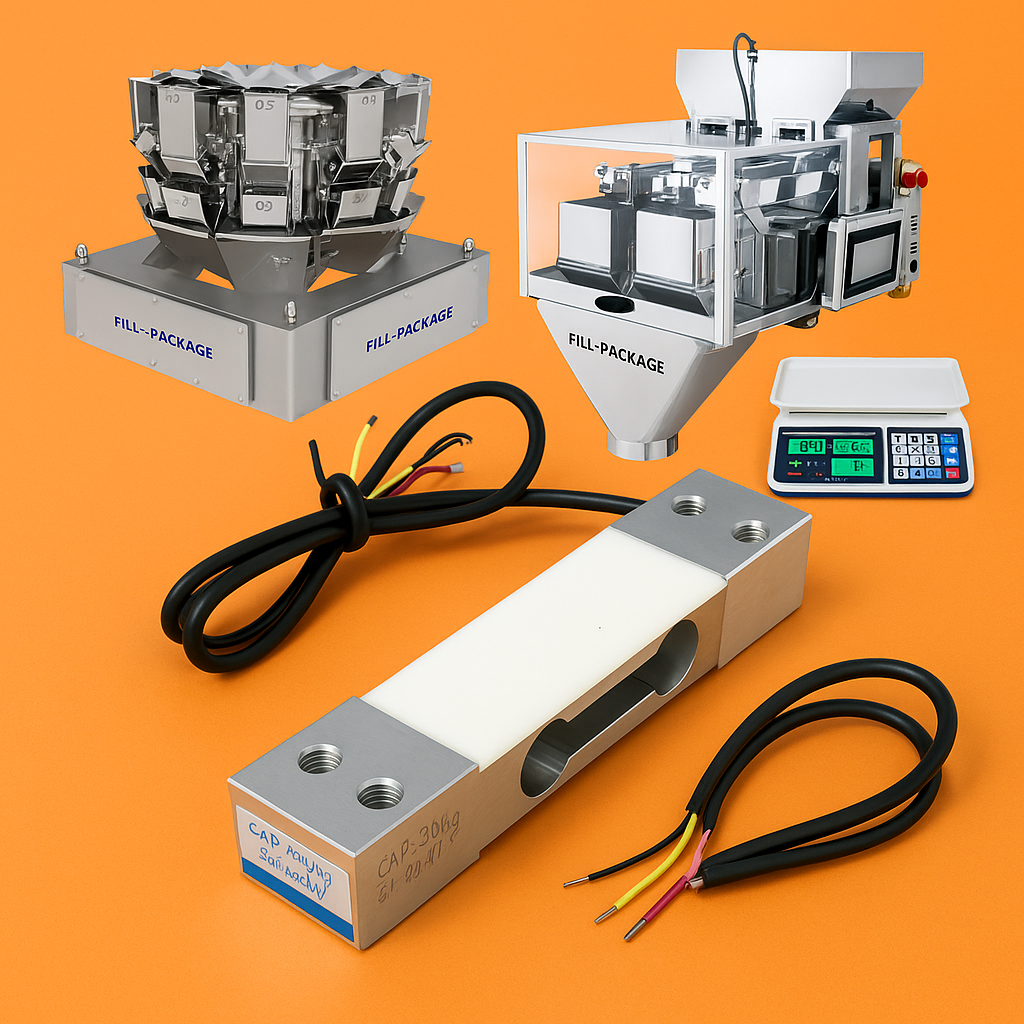
Aplicações de células de carga em diversos setores
Células de carga são indispensáveis em muitos setores, incluindo:
- Máquinas de embalagem de alimentos – precisão de dosagem e enchimento
- Balanças de varejo e industriais – transações comerciais e medições industriais
- Logística e pesagem postal – triagem e faturamento automatizados
- Dispositivos médicos e laboratoriais – balanças de pacientes, balanças de diálise e balanças de laboratório
- Pesagem de funil e silo – movimentação de materiais a granel
- Plantas de dosagem e mistura – cimento, produtos químicos e farmacêuticos
Eles garantem eficiência, conformidade e qualidade do produto.
- Dicas de montagem de células de carga – Instalação adequada para precisão
- Guia de Calibração de Células de Carga – Passo a Passo
Correto montagem de célula de carga é fundamental para garantir leituras precisas e durabilidade a longo prazo. Siga estas práticas recomendadas:
- Escolha uma superfície estável – plano, rígido e sem vibração.
- Área de instalação limpa – livre de óleo, poeira ou detritos.
- Use torque e parafusos adequados – conforme recomendações da ficha técnica.
- Garantir o alinhamento de nível – evita forças laterais que afetam a precisão.
- Evite estresses externos – cargas torcidas ou dobradas danificam os sensores.
- Siga as diretrizes de fiação – mantenha os cabos de sinal longe de linhas de alta potência.
- Manter a distância – evitar obstruções mecânicas durante a deflexão.
A instalação adequada garante durabilidade a longo prazo precisão da célula de carga e confiabilidade.
Calibração de célula de carga alinha a saída do sensor com os pesos físicos reais. O processo padrão inclui:
- Calibração zero (tara): Estabeleça uma saída de linha de base sem carga.
- Calibração de span: Aplique pesos padrão conhecidos próximos à capacidade máxima.
- Calibração multiponto: Use vários pesos para testar a linearidade.
- Verificação de carga de canto: Coloque pesos em vários pontos da plataforma.
- Teste de repetibilidade: Carregue/descarregue pesos várias vezes para garantir consistência.
Sempre use pesos de calibração certificados em condições ambientais estáveis.
Produto relacionado
Sensores de célula de carga são a base da tecnologia moderna de pesagem e medição de força. Com seus precisão, durabilidade e versatilidade, são indispensáveis em automação industrial, embalagens, dispositivos médicos e sistemas de logística. Ao compreender princípios de funcionamento da célula de carga, parâmetros da folha de dados, técnicas de instalação, métodos de calibração e manutenção, as empresas podem garantir operações precisas e eficientes.
Uma célula de carga funciona usando medidores de tensão ligado a um elemento elástico. Quando uma força ou peso é aplicado, o elemento se deforma ligeiramente, causando alterações na resistência elétrica. Essas alterações são convertidas em um sinal elétrico proporcional, representando a carga aplicada.
Precisão da célula de carga pode ser influenciado por vários fatores, incluindo não linearidade, histerese, fluência, flutuações de temperatura, interferência eletromagnética e instalação inadequada. A escolha da classe de precisão correta (C2–C5) e a calibração adequada garantem resultados confiáveis.
Calibração de célula de carga Envolve calibração zero (tara), calibração de amplitude com pesos de teste certificados e testes multipontos em toda a faixa. Isso garante que o sinal de saída corresponda à carga real aplicada. A calibração deve ser repetida periodicamente ou após modificações no sistema.
Os tipos comuns incluem:
- Células de carga de compressão – para medição de força vertical.
- Células de carga de viga de cisalhamento – usado em tanques, silos e plataformas industriais.
- Células de carga de viga S – tanto para tensão quanto para compressão.
- Células de carga de torção – medir torque.
Cada tipo é adequado para aplicações industriais específicas.
O preço das células de carga varia de acordo com a classe de precisão, capacidade, material, grau de vedação e certificação. Os modelos básicos podem custar menos de $20, enquanto os modelos de aço inoxidável de alta precisão ou hermeticamente selados podem ultrapassar várias centenas de dólares.
Com instalação, calibração e manutenção adequadas, as células de carga podem durar de 5 a 10 anos ou mais. Inspeções regulares, evitando sobrecargas e recalibração periódica prolongam a vida útil.
As células de carga são amplamente utilizadas em máquinas de embalagem de alimentos, sistemas de pesagem logística, balanças médicas, balanças de laboratório, plantas de dosagem, pesagem de funil e silo, e equipamentos de automação industrial.



